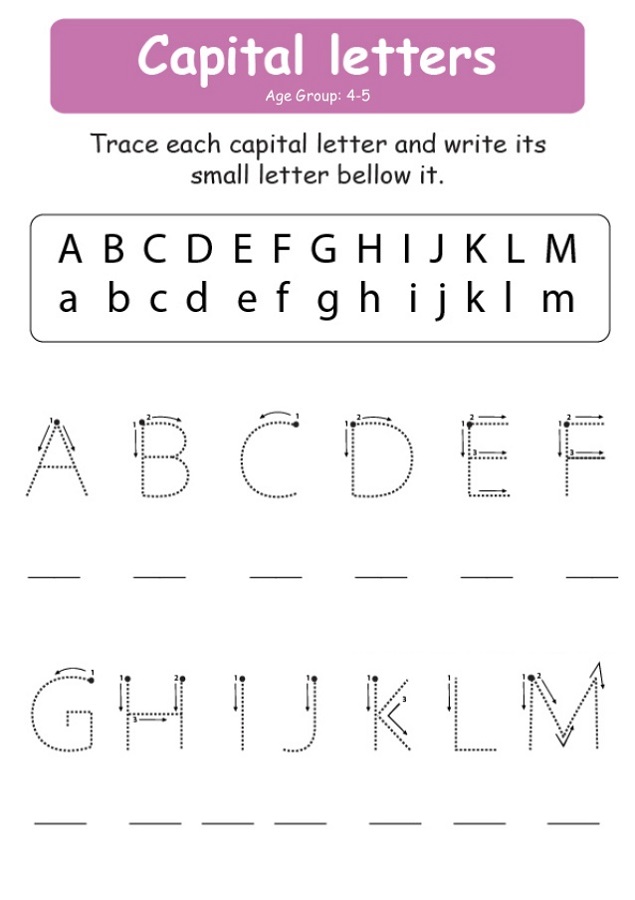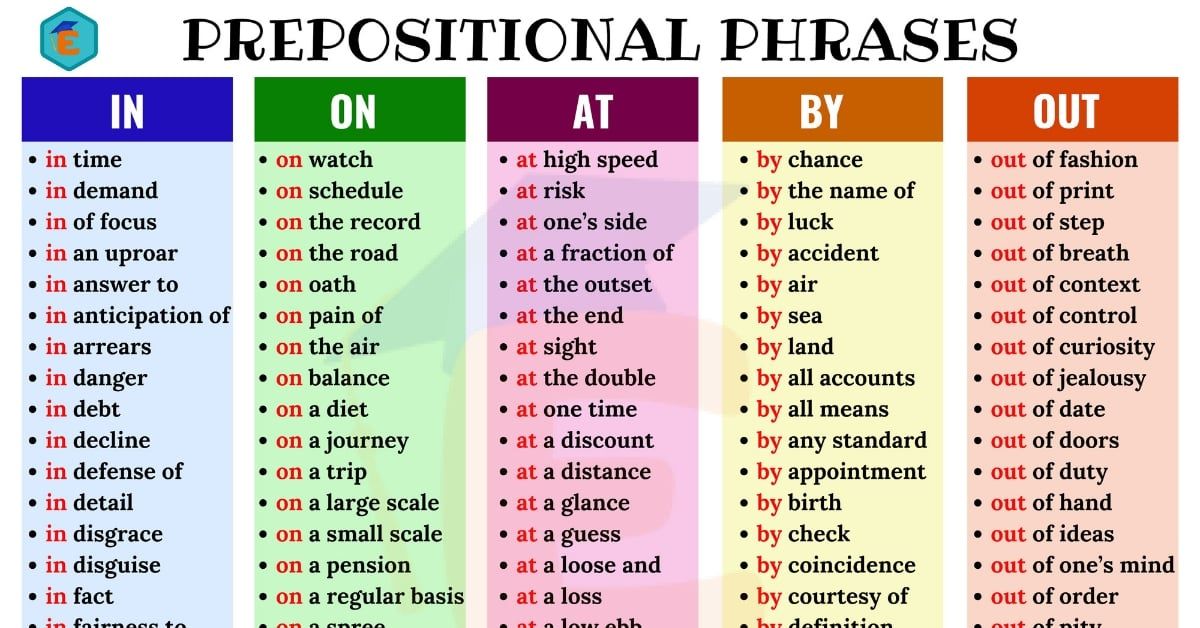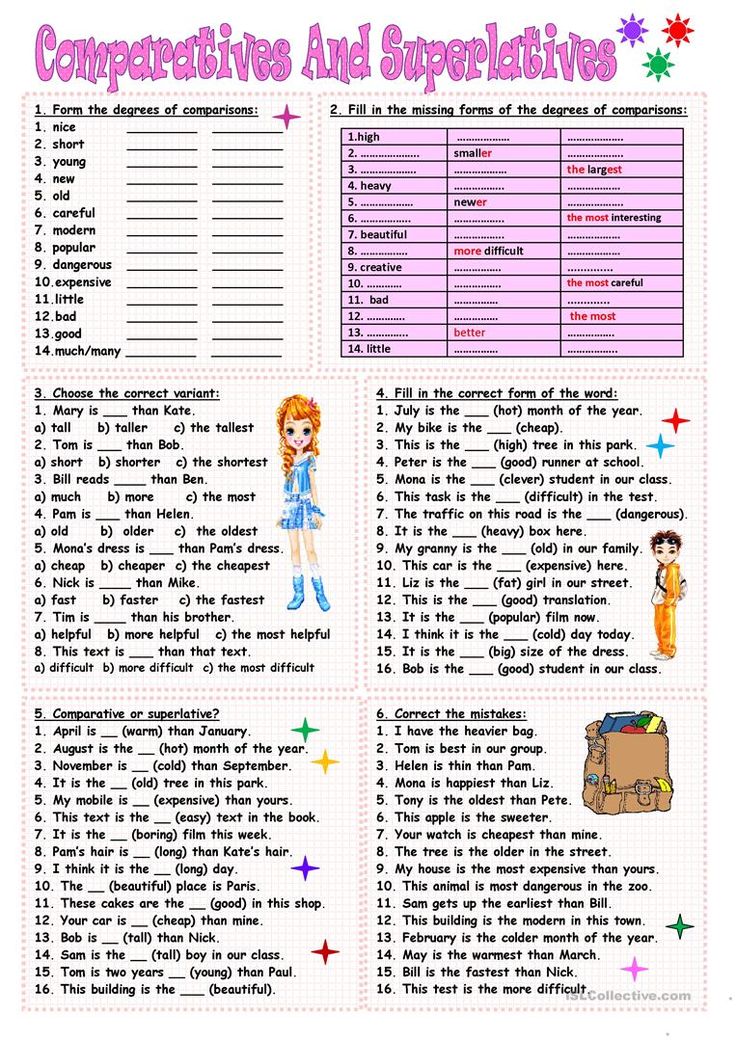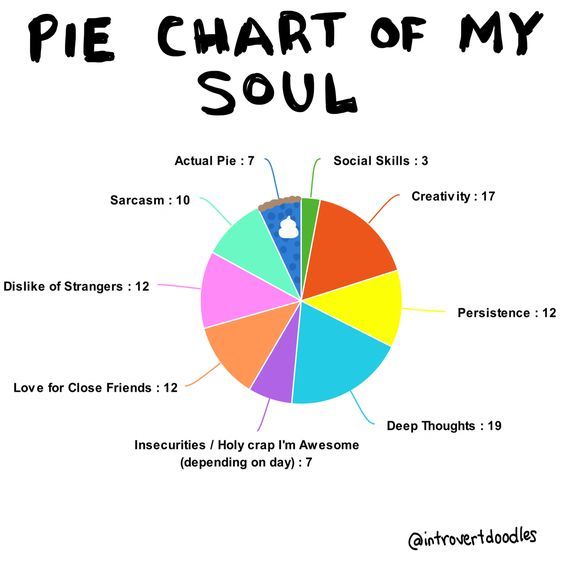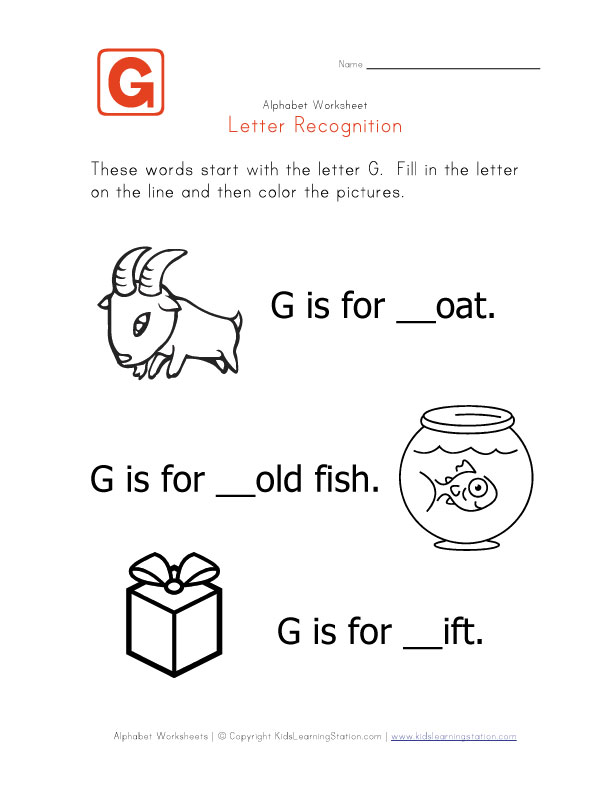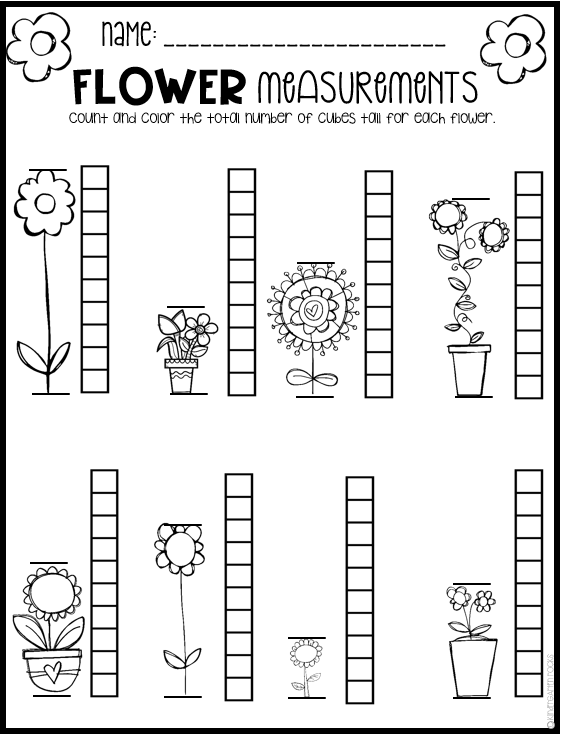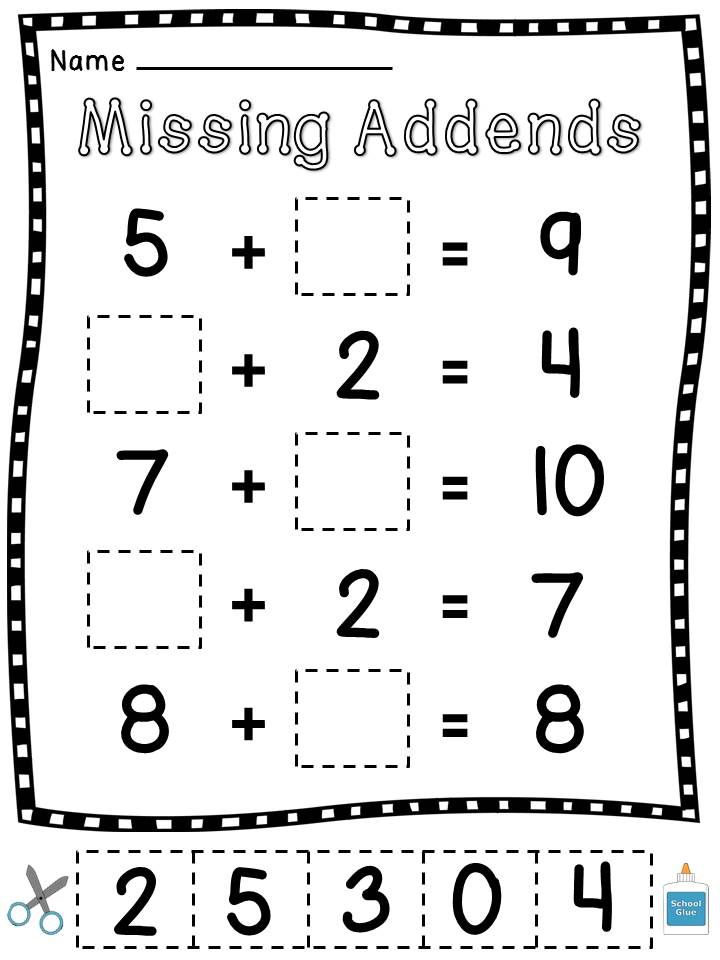Letter naming fluency activities
20 Activities to Support Letter Naming Fluency
We usually start teaching the alphabet by singing the ABCs song. Once kids have that down pat, it’s time for the next step—recognizing the letters in print. This skill is called letter naming fluency, and it’s a key step for pre-readers. Mostly, it just takes a lot of practice. Fortunately, there are lots of ways to make that practice fun, like these letter naming fluency activities. Easy as ABC!
1. Start with name letters
We often start teaching letter naming fluency with the letters of students’ names. That makes those letters meaningful to kids, and they’re more eager to learn. Try a simple activity like selecting the letters of their name and placing them into an envelope.
Learn more: Name Letters/How Wee Learn
2. Point, say, and learn
This is one of the simplest letter naming activities. Simply type or write the letters you want students to practice, then cut the paper into strips. Have the student point to each (they can use their finger or a colorful pointing stick) and say the letter. If you like, they can also say the sound that letter makes.
Learn more: Letter Strips/Conversations in Literacy
3. Roll and name
Grab this free printable at the link. Then have your student roll a die and read the letters in that row. (This one sneaks in a little counting practice too!)
ADVERTISEMENT
Learn more: Fantastic Fun and Learning
4. Clip the letters
Use this tip with letter strips or make colorful letter circles like these. You can write the letters on the clothespins and ask kids to match them up. (This is especially useful for matching capital and lowercase letters.) Or, simply use plain clothespins and ask kids to clip each letter as you call it out.
Learn more: Learning With Mrs. Langley
5. Play a game of Bang!
Grab a pack of wood craft sticks from the dollar store and use them to make your own Bang! game. Players take turns pulling a stick from the container and reading out the letter. If they get it right, they add it to their pile, but if they’re wrong, it goes back into the container. If they pull the “Bang!” stick, they have to put all their letters back!
Learn more: Stay at Home Educator
6. Pull and Say
Try this with alphabet beads or a digital alphabet board. Have students pull each letter down, saying the name as they do. Then, as they slide it back up, they say the sound the letter makes.
Learn more: Pull and Say/Conversations in Literacy
7. Park letter cars
This is so fun for active learners! Label toy cars with letters and have kids drive them into parking spaces, saying the letter names (and sounds, if you like) as they go!
Learn more: Letter Cars/I Can Teach My Child
8. Pull letters from a sensory bin
Fill a plastic bin with colored rice and magnetic alphabet letters. Then give kids a magnet wand and have them pull out the letters one by one, naming them as they go.
Learn more: Powerful Mothering
9. Swat the letters
Kids love getting to play with flyswatters! This one’s easy to set up, too. Just trace circles onto a large piece of paper and write a letter in each. Have kids swat the letter and say the name or call out a letter and have students swat it, repeating as they do.
Learn more: Hands On As We Grow
10. Enjoy a bowl of alphabet beads soup
Mix up a bowl of alphabet bead soup! Label spoons with letters and have kids dig out the match. You can mix the letter beads with plain beads for more of a challenge.
Learn more: Play Teach Repeat
11. Seek and find letters
This one’s so fun! Tape letters around the room and send kids off to find them as you call them out. Then have them say the sound that letter makes.
Learn more: Busy Toddler
12. Send letters down a zip-line
Kids are going to get a real kick out of the letter zip-line. Make your cards by attaching an unbent paperclip to the back. Then send them flying down the line to students, who name each letter as it arrives!
Learn more: Letter Zipline/Stir the Wonder
13. Whack balloon letters
Balloons make everything more fun! Hang balloons labeled with letters from the ceiling. Then have students swat them with a racket, saying each letter as they do.
Learn more: Balloon Letters/How Wee Learn
14. Match up apple letters
Grab this free printable game at the link. Kids will enjoy matching upper and lowercase letters, placing the apples in the right baskets.
Learn more: Playdough to Plato
15. Stamp letters in Play-Doh
Invest in a set of alphabet stamps, and you can use them for letter naming fluency activities and beyond. Kids stamp the letter and say it. When the Play-Doh is full, roll it out and start again.
Learn more: Letter Stamps/I Can Teach My Child
16. Match upper and lower case letters
Matching upper and lowercase letters is an important part of letter naming fluency. All you need for this activity is an egg carton and some alphabet beads.
Learn more: Letter Match-Up/I Can Teach My Child
17. Splash out with some water play
Float alphabet beads in a bin of water, then practice scooping them up and saying their names. Take this one outside on a warm day!
Learn more: Fun Learning for Kids
18. Give
Chicka Chicka Boom Boom a new twist“A told B and B told C, ‘I’ll BEAD you to the top of the coconut tree!'” This is one of the best books for building letter naming fluency. Craft a tree from pipe cleaners, then read the story and have kids add the letter beads along the way.
Learn more: Chicka Chicka Boom Boom/Stir the Wonder
19. Try letter flashcards
Flashcards are a classroom staple for a reason—they work. See how many students can do successfully in 30 seconds, play a matching game, or try any of your other favorite flashcard games. Get lots of free printable letter flashcards at the link.
Learn more: The Spruce Crafts
20. Put together letter puzzles
Get the free printable puzzle at the link, then have kids match the upper and lower case letters as they say their names out loud.
Learn more: Primary Playground
Looking for more? Try these 26 fun, easy ways for kids to practice their ABCs.
Plus, get all the latest teaching tips and ideas when you sign up for our free newsletters!
Letter Naming Fluency Activities for Kindergarten
Letters & Letter Sounds | Reading
A large part of kindergarten literacy development is mastering the alphabet. Letter naming fluency is a key skill that is practiced daily. It is the foundation for all literacy skills to come. If students have not mastered letter recognition, learning to read and write is nearly impossible.
Read on to discover letter naming fluency activities and assessments that will make teaching this skill more effective in your classroom.
This article, along with many other articles on The Printable Princess website, contains Amazon affiliate links. If you purchase through the links, we earn a small commission. We only share links to things that we love.
What is Letter Naming Fluency and Why is it Important?
Letter naming fluency is the ability to recognize and recite letter names quickly and accurately. Students need to be able to identify letter names and do it well.
As kindergarten teachers, you spend a ton of time in the first few weeks and months of school to strengthen this skill, as it is the foundation for all other literacy skills.
Even though it may seem like an easy skill to teach, it doesn’t come easy for some kiddos.
It’s key to give students multiple opportunities to work on letter recognition with a variety of hands-on kindergarten alphabet activities, games, and paper and pencil pages.
By practicing letter recognition in different ways, students will become more familiar with letter names and increase their alphabet fluency.
Once they’ve built this strong foundation, naming letters becomes more automatic for them. They don’t have to actively think about it, which makes it easier to recall the information and they become more fluent.
The Importance of Assessing Letter Naming Fluency
Before you begin teaching letters, it’s important to assess students early on in the year to determine a baseline. This will help you see what they already know and show growth throughout the year.
As you work on letter naming fluency with your students, it’s key that you assess students often to see how they’re progressing towards mastery.
You can progress monitor students every 2 weeks to start. As they work towards mastery, you can move to assessing every month.
If a student is struggling and needs intervention, progress monitor them every week to ensure you’re giving them the support they need.
You can grab this free letter names assessment download by filling out the form below. It will be delivered straight to your inbox so you can use it right away to check in on your students’ letter naming fluency.
This letter names assessment includes student uppercase and lowercase letter pages in two versions, a grayscale and color option. Each line is a different color, making it easy for students to track print.
It also comes with a teacher data tracker, so you can easily record your students’ progress and add notes. No more tracking data on sticky notes, teacher friends!
Letter Naming Fluency Activities
Alphabet Read Alouds
When beginning to teach letter names to increase alphabet fluency, it’s important to make connections so students can grasp the letter names and their corresponding sounds.
Using alphabet read aloud books, such as Chicka Chicka Boom Boom and Miss Bindergarten Gets Ready for Kindergarten are great ways to develop a love of reading and expose students to letters and sounds.
After reading the story, go back through the book and have students identify each letter name and sound. They can write it on a whiteboard or a piece of paper as you go back through the book.
For more alphabet read aloud books and ideas, check out this blog post.
I Can Write Alphabet Sentences
A great way to help students practice letter naming fluency and make connections is to give them exposure to uppercase/lowercase letters as well as pictures that begin with that letter and sound.
This helps them increase their alphabet fluency while expanding their vocabulary. As students grow their skills, they can begin to complete sentences and trace sentences using those vocabulary words.
Using activities such as I Can Write Alphabet Sentences is great for your tactile learners.
Students hear letter names and sounds in books. They see letters as they read simple sentences and look at pictures.
By writing letters and tracing simple alphabet sentences using those letters, they feel how to form the letters, making that mind-body connection.
Alphabet I Spy
To make letter recognition practice fun, play a game of Alphabet I Spy. Start by saying “I spy something that starts with the letter R that makes the /r/ sound.”
Students will look around the room to find the word. You can also play this by saying “I spy a bear. What letter does bear start with? What sound does that letter make?”
You can have students write the letter on a whiteboard, on a piece of paper, or show the letter by using a magnetic letter.
Draw a Letter
Hands-on manipulatives such as magnetic letters are great for letter naming fluency activities. Students can draw letters out of a container and identify the letter name. If you want to practice sounds, they can say the sound as well.
As students become more familiar with letter names, turn this into a small group game to see who can name the most letters accurately in 30 seconds. Whoever has the most letter manipulatives in their pile at the end of the 30 seconds wins.
Letter Hunt
Students can practice connecting letters and sounds to pictures using alphabet fluency cards and letter hunt pages.
The alphabet fluency cards are great for quick skill checks and letter recognition practice. These can be used for 1:1 practice with struggling students as well.
On the letter hunt pages, students identify the letter, the pictures that begin with that letter, and practice tracing and writing the letter in both uppercase and lowercase.
These alphabet fluency cards and letter hunt pages make the perfect letter naming fluency assessments. You can track their progress using the corresponding alphabet check-up page.
I hope these kindergarten alphabet activities and assessment options help your students master their letter naming fluency in no time.
For more alphabet activities and teaching tips, check out this blog post.
Are you looking for more engaging ways to help your learners master this important literacy skill?
Come join us over in our kindergarten teacher Facebook community and get ideas from other amazing teachers like you!
Post Tags: #alphabet#letter recognition#literacy
5 practical exercises for developing fluency
Agree, most of us first of all devote much more time to work on the correctness of a student's speech than on fluency. But how practical is it?
Usually, native speakers are quite calm about the fact that a foreigner can make grammatical errors in speech, but many are annoyed if during communication they have to wait all the time for the interlocutor to think and compose a sentence, even if it turns out to be grammatically perfect. Therefore, fluency needs to be worked on just as much as correctness, especially if your student thinks too long before answering a question or responding in single-word sentences. We have already published a selection of exercises for developing fluency, today we will consider additional practical exercises.
1. One-Sided Conversation
If a student thinks for a long time before engaging in a conversation, try this fun exercise to get them to speak faster. Watch a video together where there is a dialogue between two people. At the beginning, you can also have the student read the script of the dialogue aloud with you.
Tell the student that he will play the role of one of the characters in the video (let's call him Person B). Play the video again. The student listens to Person A's remark. As soon as Person B starts speaking, you turn off the sound and the student must respond to the remark - speak until Person B speaks on the video, and finish before Person A enters the dialogue again, and you turn on the sound.
As soon as you notice that the student is doing well on the assignment and keeping up with the notes, increase the challenge. Do this exercise with an unfamiliar video. Now you have to not only keep up with the recording, but also quickly think about what to answer, and this is as close as possible to communicating in real life. Repeated performance of the exercise over time gives very good results even with the slowest students in speaking.
2. Rhythm and Rhyme
You can also improve fluency with rhythm and rhyme. Depending on the age of the student, children's poems, popular poems, or lyrics from hit songs can be used for this exercise. Give the student a copy of the text. Read the text to the student while he listens and follows the text. Then ask him to read aloud with you. Do not change speed or intonation to help the student. The purpose of this exercise is to keep up with you. To do this, you will have to imitate your pace and intonation, which will help with fluency in oral speech.
3. May I join you?
Students who have fluency problems often prefer to watch conversations rather than engage in them. This exercise will take them out of their comfort zone. Include a video or recording of any dialogue for the student. His task is to enter into a conversation within ten seconds from its beginning, even if he has to interrupt the speaker. As soon as the student starts talking, you turn off the audio or video and let him speak, then turn the dialogue back on. The student must again enter into a conversation within 10 seconds.
4. Three-step approach
Another fluency exercise designed for students of few words. Prepare a list of simple questions. Tell the student that for each question he will have to answer with three sentences according to the following plan:
- Answer the question.
- Additional details to answer.
- Information relevant to the answer, but not asked for.
For example, What did you do last weekend?
- I went to a friend's house.
- We played video games.
- Later, we watched a movie.
Answering three sentences instead of one is a real achievement for a student of few words. This three-step approach can be practiced in writing first, and then, when the student feels confident enough, move on to speaking.
5. Stopwatch
For this exercise, you will need a stopwatch. Ask the student an open-ended question ( e.g. what did you do last summer? ) and start the stopwatch. When the student has finished answering, show him how long it took. Say that in the answer to the next question, he must break his record. You will notice that with such a formulation, a sports interest will awaken in the student, and with each question he will answer more and more.
Fluency, just like correct speech, can be improved with practice. We are sure that our exercises will help you with this!
Interesting topics:
Methods of working on reading fluency
Method of working on reading fluency
Lecture
plan
- Fluency as the actual quality of reading
- Psychophysiological components of reading fluency (reading fluency factors)
- Methods of working on reading fluency of younger students
- 0028
Literature
- Kostromina S.N., Nagaeva L.G. How to overcome difficulties in learning to read. - M.: Os-89, 2001. -240s.
- Pavlova L.A. How to form the reading skill of younger students: A practical guide / Edited by N.N. Svetlovskaya.
– M.: ARKTI, 2007. – 80 p.
- Birkin A.A. The nature of speech. - M .: Publishing house "Liquidator of illiteracy. - 2009. -334 p.
- Ziganov M.A. Speed reading. - M.: Eksmo, 2008. - 224 p.
- Baranov N.N., Sluka I.M. Speed reading. - M .: Publishing house "E", 2016. - 256 p.
Fluency as a quality of reading skill
- Galvone, chotby preav and ploendya bkvuy blyi on the site. Osatlyne bkuvy mgout seldovt in a plonm bsepordyak, everything is torn tkest chtaitseya without straps. Pichrion this is the fact that we do not read every single letter from a distance, but everything is a syllable.”
Fluency as a quality of reading skill
- Fluency is a pace that provides awareness of the text being read. Reading speed should approach the speed of his speech. Each person has a different pace of speech. Reading speed (fluency) depends on temperament, reaction speed, i.
e. from biological, incl. and age characteristics of the individual
Fluency as a quality of reading skill
- Reading fluency is a pace that is typical for colloquial speech and at which the understanding of the material being read is ahead of its pronunciation
Fluency as a quality of reading skill
- Vygotsky LS (1931): “It is usually thought that understanding is higher with slow reading; however, in reality, when reading quickly, understanding turns out to be better, because various processes are carried out at different speeds and the speed of understanding corresponds to the fast pace of reading”
Fluency as a quality of reading skill
- Quick reading is a continuous reading of a text that ensures complete and high-quality assimilation of what has been read. It is fast reading that provides a higher quality of understanding than slow reading.
Fluency as a quality of reading skill
- The average speaking speed of a person , depending on the type of nervous system, varies within 100-180 words per minute. It is this speed of reading the text aloud that is the most optimal for its simultaneous comprehension.
T.V. Chernigovskaya: Doctor of Science in Physiology and Theory of Language, Corresponding Member of the Russian Academy of Education, Head of the Laboratory of Cognitive Research and the Department of Problems of Convergence in the Natural Sciences and Humanities, St. Petersburg State University
- Therefore, the role of education is extraordinary. I understand how trite this sounds, because they talk about it all the time. But we have to come up with something with education that will be different from what we did before. Possibly children need to be taught meta-skills: how to learn, how to keep attention, how to keep memory, how to cope with information flows, how not to be moved by the mind from all this.
( performances by Chernigovskaya at SPIEF )
Psychophysiological components of reading fluency
- Temperament
- Regressions and fixations
- Visual field
- Articulation
- Organization of attention
- Flexible Reading Tactics
Psychophysiological components of reading fluency (reading fluency factors)
- Natural pace of activity (type of temperament): the speed at which mental processes work: memory, attention, perception, thinking, imagination. The number of operations, actions, movements that a person performs per unit of time.
Psychophysiological components of reading fluency (reading fluency factors)
- Regressions. Cause of regressions: force of habit, apparent difficulties of the text, lack of attention. Fighting regressions (reading with a window).
- Anticipation is a semantic guess.
An experienced reader does not read many words to the end, guessing about its content.
Diagnosis of anticipation in children
A hare was born in the forest and was afraid of everything. It will crack somewhere ... a knot, flutter ... birds ..., fall from a tree ... a lump of snow - at a hare ... soul at Friday ..
I was afraid .. zay ... a day, I was afraid ... two, I was afraid ... a week ..., I was afraid .. a year, and then I grew big ... and suddenly I got bored ... they are afraid of him.
- Niko.. I'm not afraid! - shout .. He is in the whole forest. - Here is not a fight .. not a bit ...!
Diagnosis of anticipation in children (according to Kostromina, Nagaeva, pp. 55-58)
- The time the child reads this text is recorded. Watching how long he reads words without endings.
- Then the same text is offered for reading without gaps. Record reading time
- If the gap in reading time does not exceed 15-20 seconds, then the child uses the anticipation technique.
Psychophysiological components of reading fluency (reading fluency factors)
Articulation. The movement of the lips, tongue and other speech organs slows down the process of reading. The more experienced the reader, the less he needs to pronounce. An experienced reader does not care what to perceive: a word, a letter, a line, etc.
Psychophysiological components of reading fluency (reading fluency factors)
Sluggish, blurred articulation is overcome by exercises (pure tongue twisters and tongue twisters)
Overcoming, suppression of articulation
(exercise "Lips!")
The role of reading technique
- Progress directly depends on reading technique (tempo, speed). Among fast reading students, 53% study at "4" and "5", and among slow readers - only 4%.
- Where is speed reading used?
(examples: Gorky, advice from American researchers,
Psychophysiological components of reading fluency
- Number of regressions and fixations per line.
- Slow (poor for an adult) reading: 10-15 regressions per 100 word text, 15-20 stops (fixations) per line
- 3-5 fixations per line is good.
Psychophysiological components of reading fluency
- Visual field - a section of text clearly perceived by the eyes at one fixation. The smaller the field of view, the more fixations are made, and the number of regressions also increases. This way of reading is called split-eye reading.0028
- … ..employees of the All-Russian…
- … .go scientific research…
- … ..Institute of Concern…
- … ..exposure of education….
- … ..nee black fruit….
- … .binu
Methods of working on reading technique (formation of reading skills in whole words, fluency, correctness. The system was developed on the basis of the "Practical guide to teaching reading" by M.T. Fedorenko and O.V. Dzhezheley's textbook "I'm growing up")
- at each reading lesson (10-15 min.) training exercises of five successively performed exercises.
- Breathing exercises and voice training.
- Reading blocks of words, syllables, sentences
- Practicing diction
- Development of working memory
- Intonation warm-up
Breathing and voice training (exercises)
- 1. Blow out the candle: take a deep breath and blow out one large candle at once; there are 3 candles on the table, take a deep breath and exhale the air in three portions, blow out 3 candles in turn; there is a birthday cake with candles on the table, take a deep breath and try to blow out as many small candles as possible.
Breathing and voice training (exercises)
- 1. Spray the laundry with water (in one step, three, five). Deep breath and imitation of splashing water on linen.
- In a flower shop . Take a noisy breath in through your nose and out through your mouth (2-3 times).
- Exhale with a count. Inhale deeply and count loudly as you exhale until you run out of air. As on a hill, on a hillock, 33 Egorkas stood up (deep breath) and we count Egoroks: one Egorka, two Egorkas, ... until full exhalation.
Breathing exercises and voice training (exercises)
- Bear cubs. Ask the mother bear to eat, the words must be pronounced drawling, bass, clearly pronouncing [ m ]: Mom, honey for us, Mom, milk for us.
- In an elevator.
We ride in the elevator and announce the floors, the higher the floor, the higher the voice, and vice versa. We go first from the 1st floor to the 9th, then down.
Breathing and voice training (exercises)
- Pen in the teeth. Write your name silently in the air.
Speak your name while holding the pen between your teeth and lips.
READ BLOCK
- The amount of material for the lesson strictly consecutive letter combinations (from simple to complex) 20-25 letter combinations.
1. Continuous reading of two adjacent letters
READING BLOCKS
- Continuous reading of two adjacent letters
Aa wah ay ia ee ia oa ya ya ya ya ya ya
ey ad azha ai am ap ar ah! ee elem
ed ezhek izh from ikil im their oh!
om he os from oh oh oh oh wow wow! Hey!
eh! South yuz yum yun yak yak yum yang yar
BLOCK READING
bah bah wow! You ha yes before the same for
ka li lyu la mi mu-u-u we me-e-e on
no no but well for ra o si su ta te
then that you bye! fa fu! Ha! heh! che cho sha!
shchi brrr kshsh… tshsh.. shh..
BLOCK READING
ah-ah ee-ee ek-ek oh-oh! in-in!
Ga-ha-ha! Yes Yes Yes! Hey Hey!
ha ׳ ha-ha! Yes ׳ - yes yes ha ׳ - ha ha!
ha-ha ׳ ha! Yes, yes ׳ - yes! ha ha ׳ ha!
Ga-ha-ha ׳ ! Yes yes yes ׳ ! ha ha ha ׳ !
Well, well! That he-he-he ha-ha-ha!
Ba-ba dya-dya pa-pa ma-ma
READING BLOCKS (second group of blocks)
aga bai sam shar pakh
out base bull ber won
vyya dar dom bey spruce
him – Zeya seiyu already hall
900 bizimiya 0 karzimiya 0 lif teak hil dashing hatchblunder myth mule cape mayor
us no beggars music wildebeest
fight scrap sleep ost lot
moss bosh floor Jura rivers
axis soup this body that
this rear tyuz 9000 mind
step
shield is Yuga tuz yumu
READING BLOCKS (second group of blocks, reading with buildup)
Aa aha yaga yama yava Yana
Hell garden court sed grandfather trouble
Ai bai rai lai lei forest
Am sam zam there us our ball
Ar kar chicken hands cancer
Ah pah pat mat mal may
Ay atu tush ears shin shit
Ay out jester fur coat noise uma
ba base ball bel beg demon
Would be bull household bot cat lot
Zhe tik tak mak lak Tit
Il hil vil9 zhil zam zam zad itch
Ia willow Ira Raf rif rice
Ie tik tak mak lak Tit
Il hil vil9 zhil zil bil
90 iimi02If bodice lyk bow ray lub
Ih tih yew type blunt top
Iya biya yaik yaki yagi gid
Ka kar zhar fat zhor gor
Lih lich ti tech mech max
Liu luk ki loui luch persons
La blunder lap fox force
Mi myth world mor mur muz
Mu mule zero meadow luch kuch
We are the cape my mot mot my
Mayor rem rum grew groves
Sen sap nes sat down on us
No no her 9002 9002 beggar niv new leg Noy
No not tone ioy tosh lean
Well wildebeest gnm gene vek
Oh fight my fights could they say
Ohm som scrap tom com pump
He sleep conton it they
Os ost hundred dos oma
Ot lot pot mot that mouth
Oh moh flies ohi ahi mah
Osh bosh bot god bok dock
Half fell mal gave sting
Ra Yura era cancer rock roses
Re rek vak vaz voz 9000 Si
Si
axes siv sig mig mag
su soup suk juice current so
su suk soup probe pike cheeks
That this era slave is glad genus
te tel tol vol dol del
then that tut out kut kum
To this tuya tuff tour drill
you rear ardor half a year
Ty tyuz toz ace ties tooth
Wah uma cheers poppy cancer so
Husband puddles of skis wad page
Um kum kom cat col floor
Us rusk mustache cheese ser set
Uh duh hud uha ura uma
Fa Ufa fat far fal Phil
Fu Ufu foot Fet fen background
Ha uh ham ram Rim run
hor hohod 2 che check kech leather zhek zhuk
Chu chub chur Chuk chik chin
Reading letter combinations with a coincidence of several consonants at the end of the word
- Box Borsch Voros VOLK
- Gong disc iva zyuyye volley
- Louvre Luft Match Match Brain 9002
Reading letter combinations with a confluence of several consonants at the end of a word
Act akr bars bolt Vakhsh vint
Coat of arms proud horn GOST edge turf
Probe umbrella court lift walrus
Empty putsch ring rhombus growth grade
Foundation fort zinc scarf pole silk
Reading words with consonants at the beginning of a word
The doctor was poured at once harm all the technical college
Where the count is stupid rook sin vulture
Jazz days days bustard friend waited
Priest ringing evil sign heat bite
Cry club beak fang crab
Difficult monosyllabic words
Up stroke contribution soared contribution glance
Gwalt tract Dnieper Dniester thrush
Monster finger motley item warehouse contribution
Meaning sports pillar guard crackle
Tail Holmes stamp assault
3
Reading disyllabic words
Abbot of the poor bravo command
Absurdity without headlights briquette wreaths
Cupid white bronze top
Openwork bison bronchitis top
Akbar golden eagle armor spring
Reading short phrases from words in one syllable
- The walrus was cold, but crawled.
- Michael ate soup and cake.
- Bolt on board.
- Her coat was bad.
- The class stood at their desks
- My friend is generous.
Reading short phrases from words in one syllable
I was carrying bread up.
The reaper was waiting.
The house is bad.
A rook sat on our house.
Practicing intonation when reading short phrases of words in one syllable
The reaper was waiting. Was the reaper waiting? The Reaper has been waiting!
The house is bad. Is the house bad? The house is bad!
A rook sat on our house.
Did a rook land on our house?
A rook has landed on our house!
Practicing reading words with b
Life - to be eats - there is out - stench
Guest - GOST chalk - stranded distance - gave
Ate - spruce let - empty blood - shelter
Raft - touch flesh - throne rice - lynx
We didn't go deep - there is mud
We walked through fire, through dust and smoke.
- Life - to be eats - there is out - stench Guest - GOST chalk - stranded distance - gave El - spruce let - empty blood - shelter Raft - touch flesh - throne rice - lynx dust and smoke.
Practicing reading words with separating b and b
Sat down - ate a reception - volume
Semka - I’m shooting - I’ll drive in
arrival - the congress took - withdrew
Kolya - stakes seed - family
Reading words and phrases of three or more syllables
Hell Danish home
Money action artist
ampalls dibazole
Knowledge anteater
Society embittered error
Forest horsetail, valuable horsetail.
Not a cloud in the sky - be hot.
Reading words and phrases and phrases without limiting possible speech difficulties
April Lomonosov half ashirina
Basalt -bazaal essence
Mirror stepdaughter Surname
The famous imperfection
Setapositiva Revolution Enthusiasm
Exercises for practicing diction (method of working with tongue twisters)
First, slow and distinct pronunciation, then the most clear and fast pronunciation. The color can be used to highlight the letters that indicate the sounds that you have to work on.
S enka and S anka were taking S o nka on sleds.
Shla Sasha along the highway and sucked dry.
Exercises for practicing diction (method of working with tongue twisters)
You need to start work with one tongue twister and add a new one at each lesson. To practice clear pronunciation, only one new line is offered, while the volume of reading material increases. During 3-4 lessons, reading a tongue twister begins with a text familiar to the children, but when moving to an unfamiliar new line, the pace of reading is maintained. This is an exercise for reading “with a run”. Children, making a “run-up” (reading a familiar part of a tongue twister), prepared to read a new line at a good pace and without errors.
Exercises for practicing diction (method of working with tongue twisters)
From near Kostroma, from near Kostromishchi, Senka Sanka and Sonya are being carried on a sled. It’s lucky and tongue twisters gossip like that: they say, a black grouse was sitting on a tree, from a tree - a shadow of a black grouse: they say, don’t look for a goose mustache, you won’t find it; they say what Savva is, such is the glory. He spoke quickly, spoke quickly, and so he did not repeat all the tongue twisters.
Exercises for practicing diction (method of working with tongue twisters)
Two woodcutters, two woodcutters, two woodcutters were talking about the Stall, about Varka, about Larka's wife, arguing that the wasp has not mustaches, not mustaches, but mustaches; that the cap was not sewn in the style of Kolpakov, that the bell was poured not in the style of bells. To argue about trifles is to miss the point.
Exercises for practicing diction (method of working with tongue twisters)
Dust flies across the field from the clatter of hooves - a woman is driving from the city, carrying three boxes of news: they say, the good fellow ate thirty-three pies with a pie, but all with cottage cheese: they say, Prokop came to boil his dill; they say the Potos were playing loto. From the clatter of hooves, dust flies across the field. Whoever brings news would have two hundred lashes a day.
Exercises for practicing diction (method of working with tongue twisters)
Malanya chattered that thirty-three ships tacked (6 times), but did not catch. She chatted and chatted, but she didn’t blurt out everything; lies walk on rotten legs: whoever lied yesterday will not be believed tomorrow.
Exercises for practicing diction (method of working with tongue twisters)
- On Thursday the fourth at four and a quarter o'clock three priests walked, three Procopius priests, three Prokopievich - walked, walked, suddenly in front of them there was a river - as wide as the Oka, yes not Oka. And on the other side there is a priest on a shock, a cap on the priest, a shock under the priest, a priest under the cap. The priests saw, the priests opened their mouths, the priests screamed, the priests ran.
Fear has big eyes - a frightened crow is afraid of a bush.
Exercises for practicing diction (method of working with tongue twisters)
Dust flies across the field from the clatter of hooves. That courier overtakes the courier in the quarry. Only the stupid-lipped bull is not in a hurry, he was lying by the road, he was only shaking his head, the stupid-lipped bull, the bull's white lip was stupid.
Exercises for practicing diction (method of working with tongue twisters)
Shadow-shadow-sweat, above the city there is a wattle fence. Listen, who is not lazy, a fairy tale about a red maiden, Malanya-babbler, who chatted milk, blurted out, but didn’t blurt out, but gave Romasha whey from yogurt. But Romasha has his own mind: he didn’t eat, but he sat at the table, it flowed down his mustache, but it didn’t get into his mouth! Here's a fairy tale for you, and a bunch of bagels for us.
Exercises for practicing diction (method of working with tongue twisters)
Mother Romasha gave whey from yogurt, just whey from yogurt, and he told everyone that, they say, I’m a daring fellow, I ate jelly, and even thirty three pies with a pie, but all with cottage cheese, but one with mushrooms, and one with offal . .. He chatted, chatted, grinded, grinded, his tongue was chattering, but his head did not know.
Exercises for practicing diction (method of working with tongue twisters)
You can’t tell with your tongue, you can’t use your finger, there’s nothing to argue with your hands, if God didn’t give you the mind, the speech is not red with the mind, and if the tongue is lisping, then say a tongue twister after a tongue twister (pronounce 5-6 tongue twisters of your choice) All tongue twisters are needed talk over, re-speak, and then you will speak like a river murmuring.
Exercises for practicing diction (method of working with tongue twisters)
Our Filat is never to blame, our Filat is always to blame for Malanya, his forehead is like a shovel, but his mind is not rich. If he goes, he doesn’t get there, he sits down and takes a nap, but he doesn’t take a nap, so at least he snores and whistles, whistles and wakes up, wakes up and curls up again: they say, I’m not me, and the horse is not mine. And he lives like that, he is not good for himself, and he is not good for people either.
With whom did you come to us: with a laugh or with a laugh?
Development of working memory
- It has been established that the development of reading technique is often hampered due to poorly developed working memory. Work on its development is carried out with the help of visual dictations. Visual dictations help here. Work on them begins in the reading lesson - reading sentences, speaking in chorus or individually, collective clarification and correction of what was said; at the Russian language lesson, a repeated demonstration of typing on the board and writing the text in a notebook. This technique ensures maximum literacy when writing set sentences.
Development of working memory
You can write sentences with a wet rag on the board. In this case, the exposure time is equal to the drying time of the wet trace. The exposure time in this case is determined not by the teacher, but by an objective reason. This will organize the children to read at a fast pace and memorize accurately. It is important to observe the measure in the amount of material. It is better to start by demonstrating one or two sentences at the same time and gradually increase to five or six.
Development of RAM
When the demonstration of the set is added to six sentences, you can use tasks of increased complexity:
- Write down the sentences in reverse order;
- Write only the second and fifth sentences;
- - write down sentences from the third to the sixth
Development of working memory texts of visual dictations (according to I.T. Fedorenko)
- Set No. 1 number of letters
- The snow is melting. 8
- It's raining. 9
- The sky is gloomy. 10
- Kolya fell ill. 11
- Birds sang.
11
- The field is empty. 12
Development of working memory texts of visual dictations (according to I.T. Fedorenko)
- Set No. 2 number of letters
- Frosts are cracking. 12
- I'm looking for strawberries. 13
- A spruce grew in the forest. 13
- Autumn has come. 14
- The days are getting shorter. 14
- There are many birches in the forest. 15
Development of working memory texts of visual dictations (according to I.T. Fedorenko)
- Set No. 3 number of letters
- Birds have arrived. 15
- The sun is shining brightly. 16
- Dasha wiped the blackboard. 16
- Streams run merrily. 16
- A sharp wind blew. 16
- Zoya studies hard. 17
Development of operative memory texts of visual dictations (according to I.T. Fedorenko)
- Set No.
4 number of letters
- The woodpecker was chiseling a tree. 17
- I want to plant flowers. 18
- Frost adorned the trees. 18
- Flowers will wither without water. 19
- The hot summer has flown by. 19
- A spruce was planted near the house. 20
Development of working memory texts of visual dictations (according to I.T. Fedorenko)
- Set No. 5 number of letters
- The sun is shining and warming. 20
- Fedya solved the problem at the blackboard. 21
- Dawn lit up in the sky. 21
- Frost glittered on the trees. 21
- The city of Kyiv stands on the Dnieper. 22
- Strawberries are picked in the forest. 22
Development of working memory texts of visual dictations (according to I.T. Fedorenko)
- Set No. 6 number of letters
- In winter, the river is covered with ice.
23
- The boy gave flowers to his mother. 23
- Dust was removed from the board. 24
- Collective farmers work in the meadow. 24
- Chickens climbed into the garden. 24 We lived near a birch grove. 24
Development of working memory texts of visual dictations (according to I.T. Fedorenko)
- Set No. 7 number of letters
- The sky was covered with gray clouds. 25
- The children planted an acacia tree in the yard. 25
- Grandmother bought a primer for her grandson. 25
- The warm sun warmed the earth. 26
- My sister works at a factory 26
- The spring sun warmed tenderly. 26
Development of working memory texts of visual dictations (according to I.T. Fedorenko)
- Set No. 8 number of letters
- It's raining. 10
- We love our Kyiv. 14
- Grandmother is baking a cake.
17
- Andrey has a blank notebook. 20
- Help your friend. 21
- Being healthy is very important. 22
Development of working memory texts of visual dictations (according to I.T. Fedorenko)
- Set No. 9 number of letters
- The water in the sea tastes salty. 22
- Our country is fighting for peace. 22
- A big change has begun. 23
- Children went to the forest for mushrooms. 23
- Hands should be washed with soap and water. 23
- Beautiful streets of our city. 24
Development of working memory texts of visual dictations (according to I.T. Fedorenko)
- Set No. 10 number of letters
- Moscow is the capital of our Motherland. 24
- Schoolchildren are watering seedlings. 24
- Deputies gathered for the congress. 24
- One must be honest and truthful. 25
- The stars are shining on the Kremlin towers.
25
- In the summer our family lived on the Volga. 25
Development of working memory texts of visual dictations (according to I.T. Fedorenko)
- Set No. 11 number of letters
- Thick rye is merrily earing. 25
- The fields were covered with white snow. 25
- We were reading an interesting story. 25
- Michurin worked a lot and porn. 26
- New houses are growing very fast. 26
- Our teacher got out of the car. 26
Development of working memory texts of visual dictations (according to I.T. Fedorenko)
- Set No. 12 number of letters
1. The boys brought dry branches. 26
2. Rye and wheat ripen in the field. 26
3. Frames and doors were brought to the construction site. 27
4. Children of all countries want to live in peace. 27
5. A fresh breeze blew coolness. 28
6. Lightning flashed and thunder rumbled. 28
Development of working memory texts of visual dictations (according to I.T. Fedorenko)
- Set No. 13 number of letters
1. The meadows and fields have been mowed and cleared for a long time. 28
2. The squirrel climbed onto the top branch. 29
3. The sun was shining brightly and the children were swimming. 30
4. Grasses are cut when they are in bloom. 31
5. Grandfather Philip tends the cows. 32
6. I love to meet the sunrise in the field. 32
Development of working memory texts of visual dictations (according to I.T. Fedorenko)
- Set No. 14 number of letters
1. A big gray cloud rose up behind the river. 32
2. Evenki hunters live in the distant taiga. 33
3. Everyone was happy to meet the astronauts. 33
4. The scouts set off on a dangerous path. 33
5. A friendly family will turn the earth into gold. 34
6. Shoes should always be free of dust. 34
Development of working memory texts of visual dictations (according to I.T. Fedorenko)
- Set No. 15 number of letters
1. Our merry garden will blossom and turn green. 34
2. Blueness appeared between the thinning tops. 35
3. Free, wide steppes of Ukraine are good. 35
4. The dog barks at the brave, but bites the cowardly. 36
5. Pavel and Vika love to read fairy tales. 36
6. Our people want to live in peace with all nations. 37
Development of working memory texts of visual dictations (according to I.T. Fedorenko)
- Set No. 16 number of letters
1. There are predatory animals in the taiga: wolves, lynxes. 36
2. The moon makes its way through the wavy mists. 36
3. Schoolchildren are getting ready for the new school year.

